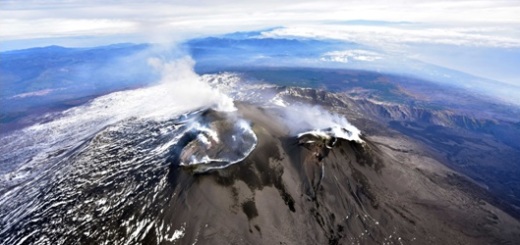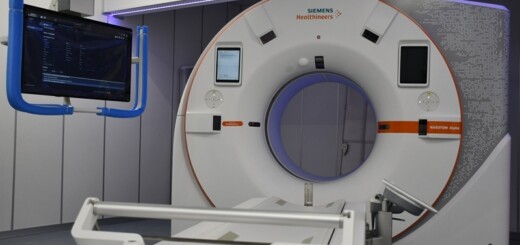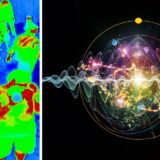Un satellite e misure sul terreno per valutare l’emissione naturale geologica di metano in atmosfera
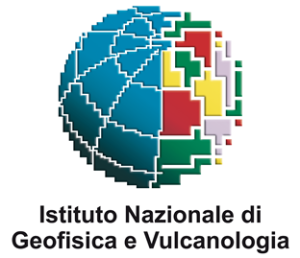
Le analisi effettuate sull’Isola di Giava in Indonesia hanno permesso di determinare la più grande emissione di metano di natura geologica mai misurata fino ad ora
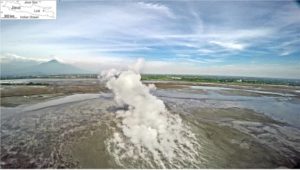
Roma, 4 marzo 2021 – Uno studio innovativo recentemente pubblicato sulla rivista “Scientific Reports” di Nature, ha determinato la quantità di metano emessa da una singola manifestazione di gas naturale, una delle più grandi del pianeta, denominata Lusi, in Indonesia. L’indagine, che si basa sull’integrazione dei dati acquisiti sul terreno con dati satellitari, suggerirebbe che alcune stime delle emissioni globali di metano geologico basate sul carbonio-14 (radiocarbonio) sono sottostimate.
Le emissioni geologiche di gas dai bacini sedimentari petroliferi rappresentano una componente naturale del budget atmosferico di metano.
Tuttavia, la quantità globale di metano geologico rilasciata in atmosfera è oggetto di vari studi, alcuni in contrasto tra loro. Infatti, mentre le stime di tipo statistico, basate sui flussi misurati sul terreno, suggeriscono una emissione globale di circa 50 milioni di tonnellate di metano all’anno, altre stime, basate su analisi del radiocarbonio (carbonio-14) in carote di ghiaccio dell’era preindustriale, suggeriscono valori molto più bassi, tra 0,1 e 5,4 milioni di tonnellate all’anno.
Lo studio ora pubblicato è stato condotto dal Center for Earth Evolution and Dynamics (CEED) dell’Università di Oslo (Norvegia) in collaborazione con l’Istituto Nazionale di Geofisica e Vulcanologia (INGV), con il Netherlands Institute for Space Research di Utrecht (SRON) e con l’agenzia indonesiana Pusat Pengendalian Lumpur Sidoarjo (PPLS).
I ricercatori hanno analizzato la spettacolare manifestazione di emissione di gas metano che si è sviluppata nel 2006 sull’isola di Giava, in Indonesia. L’area, soprannominata Lusi, ha continuato da allora ad emettere acqua, petrolio, gas e fango, con eruzioni in grado di espellere fino a 180.000 m3 di fango al giorno e pennacchi di vapore che raggiungono diverse decine di metri di altezza.
“I risultati che abbiamo ottenuto dopo anni di monitoraggio – spiega Alessandra Sciarra, ricercatrice dell’INGV e co-autrice dello studio – approfondiscono il dibattito scientifico sull’emissione globale di fonti geologiche di metano e suggeriscono che alcune delle recenti stime basate su analisi di antiche carote di ghiaccio sono significativamente sottostimate. Infatti, la quantità di metano rilasciata da Lusi corrisponde già da sola alla valutazione minima degli studi per l’intero pianeta basati sulle carote di ghiaccio”.
Lusi è un fenomeno geologico alimentato dalle elevate pressioni dei fluidi nelle rocce sedimentarie e dalle alte temperature derivanti dall’interazione con il vicino complesso vulcanico di Arjuno-Welirang. Si tratta, quindi, della manifestazione superficiale di un sistema ibrido sedimentario-idrotermale. Il gas che fuoriesce, ricco di anidride carbonica (CO2) e metano (CH4), viene espulso in atmosfera da due crateri centrali e da migliaia di punti di emissione minori (satellite seeps) che coprono un’area di 7,5 km2. Fino ad ora, la quantità di gas effettivamente rilasciata in atmosfera da questo sito era sconosciuta.
“Il nostro gruppo di ricerca ha unito tecniche di misure da terra e da un satellite, chiamato TROPOMI, per quantificare il gas rilasciato in atmosfera da Lusi – prosegue Sciarra – Le due tecniche hanno indicato valori simili di emissione di metano, di circa 100.000 tonnellate all’anno: si tratta della più alta emissione di metano mai misurata da una singola manifestazione di gas”.
I risultati ottenuti dai ricercatori suggeriscono che la quantità di gas metano emessa da Lusi è proporzionalmente coerente con il livello di flusso di metano (il cosiddetto “fattore di emissione”) tipicamente rilasciato da altre manifestazioni simili di gas naturale terrestre come, ad esempio, i vulcani di fango.
Ciò significa che se le misurazioni provenienti da questi siti venissero combinate a livello mondiale, le stime globali arriverebbero a indicare una emissione di metano geologico più vicina a quella definita con criteri statistici, basate sui flussi misurati sul terreno (dell’ordine di 50 milioni di tonnellate di metano all’anno), piuttosto che quella, praticamente irrisoria, basata sulle valutazioni effettuate con il radiocarbonio nelle carote di ghiaccio.
“Conoscere le quantità e i flussi reali di metano da fonti geologiche naturali risulta particolarmente importante per valutare meglio le emissioni di gas antropogeniche, come quelle legate all’industria petrolifera, e quindi il bilancio del metano atmosferico complessivo.Il nostro studio suggerisce, infine, che le misurazioni delle emissioni di gas svolte con l’aiuto dei dati satellitari possono rivelarsi uno strumento chiave per supportare gli studi a terra e migliorare le stime del budget globale del geo-metano”, conclude Sciarra.
Fig. 1 – Immagine dal drone del pennacchio e dell’emissione principale di Lusi durante la sua regolare attività di geysering. Sullo sfondo il complesso vulcanico di Arjuno-Welirang
*******
INGV. The natural geological emission of methane into the atmosphere evaluated through the integrated use of a satellite and measurements on the ground
The analysis carried out on the Island of Java, Indonesia, have made it possible to determine the largest geological methane emission ever measured so far
Rome, March 4, 2021 – An innovative study recently published in Nature’s “Scientific Reports”, determined the amount of methane emitted by a single manifestation of natural gas, one of the largest on the planet, called Lusi, in Indonesia. The survey, which is based on the integration of data acquired on the ground with satellite data, would suggest that some estimates of global emissions of geological methane based on carbon-14 (radiocarbon) are underestimated.
Geological emissions of gas from sedimentary oil basins are a natural component of the atmospheric methane budget.
However, the global amount of geological methane released into the atmosphere is the subject of various studies, some at odds with each other. In fact, while the statistical estimates, based on the flows measured on the ground, suggest a global emission of about 50 million tons of methane per year, other estimates, based on analysis of radiocarbon (carbon-14) in ice cores of the pre-industrial era, suggest much lower values, between 0.1 and 5.4 million tons per year.
The study now published was conducted by the Center for Earth Evolution and Dynamics (CEED) of the University of Oslo (Norway) in collaboration with the Istituto Nazionale di Geofisica e Vulcanologia (INGV), the Netherlands Institute for Space Research in Utrecht ( SRON) and the Indonesian agency Pusat Pengendalian Lumpur Sidoarjo (PPLS).
The researchers analyzed the spectacular manifestation of methane gas emission that developed in 2006 on the island of Java, Indonesia. The area, nicknamed Lusi, has continued to emit water, oil, gas and mud ever since, with eruptions capable of expelling up to 180,000 m3 of mud per day and plumes of steam reaching several tens of meters in height.
“The results we have obtained after years of monitoring – explains Alessandra Sciarra, researcher at INGV and co-author of the study – deepen the scientific debate on the global emission of geological sources of methane and suggest that some of the recent estimates based on analysis of ancient ice cores are significantly underestimated. In fact, the quantity of methane released by Lusi already corresponds by itself to the minimum evaluation of the studies for the entire planet based on ice cores”.
Lusi is a geological phenomenon fueled by the high pressures of fluids in sedimentary rocks and by the high temperatures resulting from the interaction with the nearby Arjuno-Welirang volcanic complex. It is therefore the superficial manifestation of a sedimentary-hydrothermal hybrid system. The gas that escapes, rich in carbon dioxide (CO2) and methane (CH4), is expelled into the atmosphere by two central craters and by thousands of minor emission points (satellite seeps) covering an area of 7.5 km2. Until now, the amount of gas actually released into the atmosphere from this site was unknown.
“Our research group has combined measurement techniques from the ground and from a satellite, called TROPOMI, to quantify the gas released into the atmosphere by Lusi – continues Sciarra – The two techniques indicated similar methane emission values, of about 100,000 tons per year: this is the highest methane emission ever measured by a single manifestation of gas”.
The results obtained by the researchers suggest that the amount of methane gas emitted by Lusi is proportionally consistent with the level of methane flow (the so-called “emission factor”) typically released by other similar manifestations of terrestrial natural gas, such as, for example, the mud volcanoes.
This means that if the measurements from these sites were combined globally, the global estimates would come to indicate a geological methane emission closer to that defined with statistical criteria, based on flows measured on the ground (of the order of 50 million tons of methane per year), rather than the practically negligible one based on the evaluations carried out with radiocarbon in ice cores.
“Knowing the real quantities and flows of methane from natural geological sources is particularly important to better assess anthropogenic gas emissions, such as those related to the oil industry, and therefore the overall atmospheric methane balance. Finally, our study suggests that the measurements of gas emissions carried out with the help of satellite data can prove to be a key tool to support ground studies and improve estimates of the global geo-methane budget”, concludes Sciarra.
Fig. 1 – Drone image of the plume and main emission of Lusi during its regular geysering activity. In the background, the Arjuno-Welirang volcanic complex


